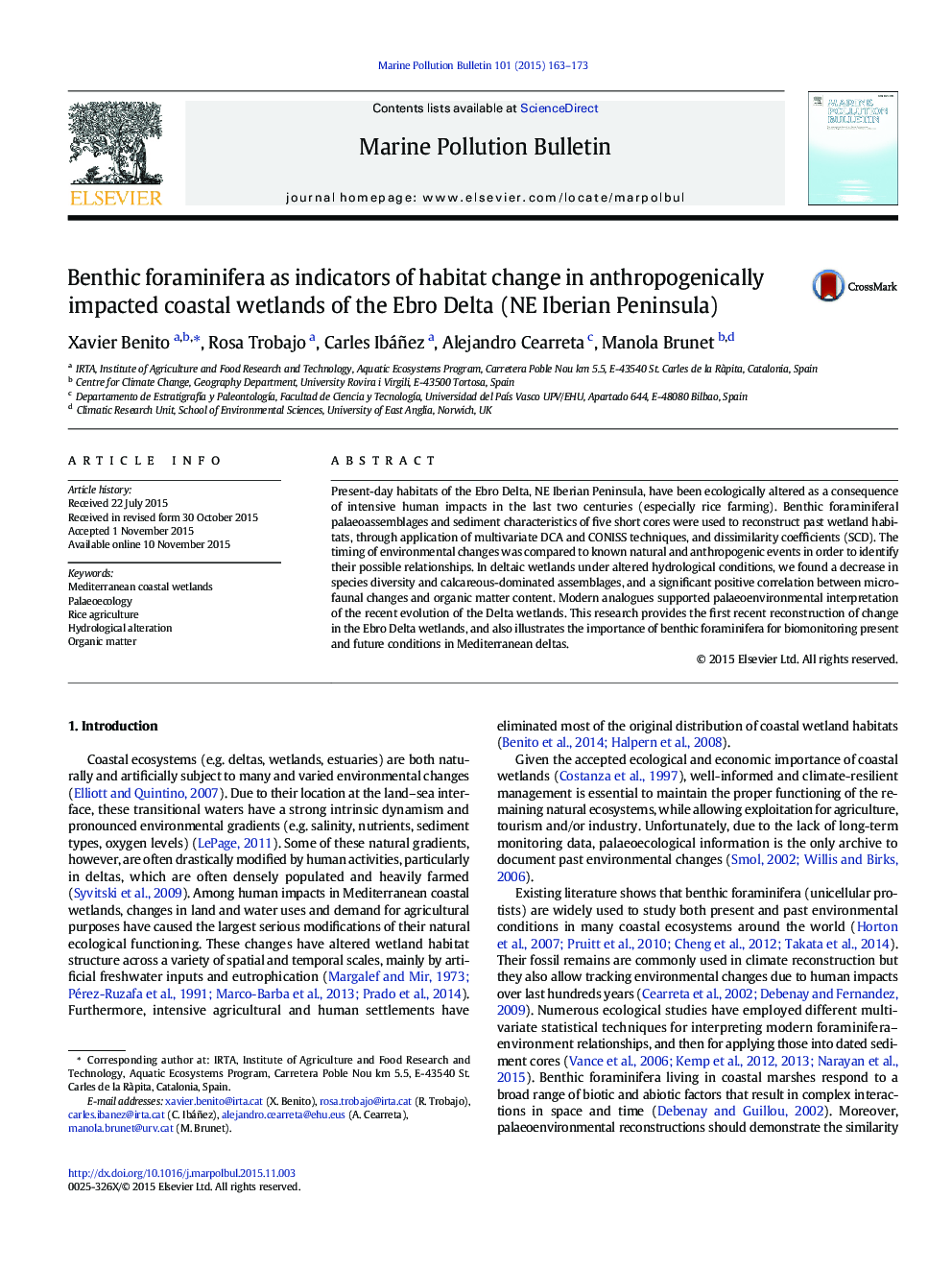| Article ID | Journal | Published Year | Pages | File Type |
|---|---|---|---|---|
| 4476599 | Marine Pollution Bulletin | 2015 | 11 Pages |
•Subfossil benthic foraminifera revealed clear habitat shifts in a Mediterranean delta.•Present-day habitats of the Ebro Delta are result of intensive rice colonization.•Benthic foraminifera as tool to set realistic pre-impact conditions in the Ebro Delta.
Present-day habitats of the Ebro Delta, NE Iberian Peninsula, have been ecologically altered as a consequence of intensive human impacts in the last two centuries (especially rice farming). Benthic foraminiferal palaeoassemblages and sediment characteristics of five short cores were used to reconstruct past wetland habitats, through application of multivariate DCA and CONISS techniques, and dissimilarity coefficients (SCD). The timing of environmental changes was compared to known natural and anthropogenic events in order to identify their possible relationships. In deltaic wetlands under altered hydrological conditions, we found a decrease in species diversity and calcareous-dominated assemblages, and a significant positive correlation between microfaunal changes and organic matter content. Modern analogues supported palaeoenvironmental interpretation of the recent evolution of the Delta wetlands. This research provides the first recent reconstruction of change in the Ebro Delta wetlands, and also illustrates the importance of benthic foraminifera for biomonitoring present and future conditions in Mediterranean deltas.
